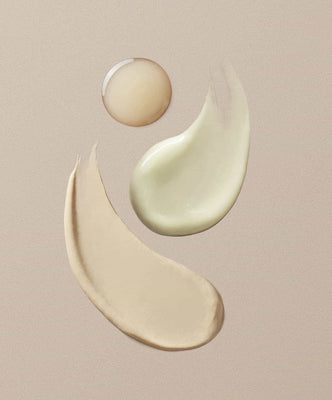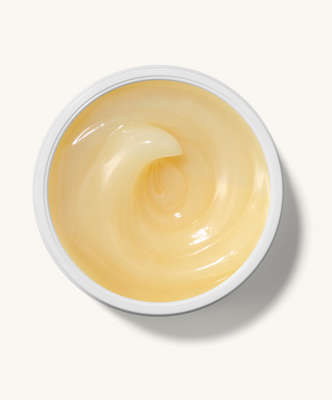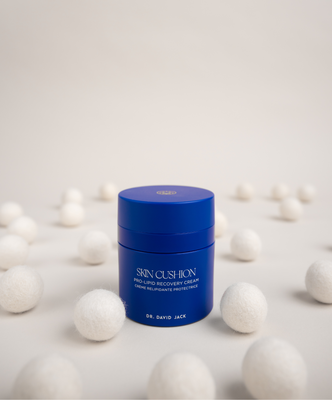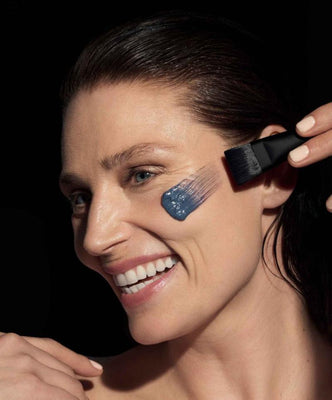· FACE FACTs ·
PDRNs in Skincare: What You Need to Know About Salmon Sperm in Korean Beauty
Introduction
In a beauty world saturated with buzzwords, it’s rare to come across an ingredient that is both unusual and clinically robust. Yet PDRNs - short for Polydeoxyribonucleotides, or just polynucleotides - are just that. I recently travelled to Seoul, South Korea, on a skincare research trip with my team to investigate new ingredients and formulations for my brand (Korea is well known as the Mecca for advanced skincare), and found that PDRNs are the latest (and perhaps greatest?) ingredient to take this world by storm.
Originally developed for wound healing and tissue regeneration, these salmon-derived DNA fragments are used extensively now in Korean skincare, where their reputation for promoting youthful skin has become a viral phenomenon across social media, thanks to some cult brands. But do they live up to the hype?
What Are PDRNs?
PDRNs are highly purified DNA fragments, usually extracted from the milt (sperm) of salmon species such as Oncorhynchus mykiss (rainbow trout) or Oncorhynchus keta (chum salmon). These DNA chains are biologically compatible with human cells and can act as both biostimulants and nucleic acid sources to promote tissue regeneration and repair. PDRN used in skincare is typically a byproduct of the food industry, making it a relatively sustainable ingredient as it utilises material that would otherwise go to waste.
Though their topical use is relatively recent, PDRNs have been used for decades in injectable medical treatments, including burn healing, post-surgical recovery and ulcer management. Their crossover into skincare and aesthetics has been led primarily by the Korean beauty industry, where regenerative actives are central to anti-ageing and skin-repairing formulations.

How Do PDRNs Work in the Skin?
PDRNs exert their effects primarily through two key mechanisms:
1. Adenosine A2A Receptor Activation
PDRNs bind to A2A adenosine receptors on skin cells, triggering a cascade that:
- Promotes fibroblast proliferation - these are the cells in the skin that produce collagen, elastin, hyaluronic acid and other structural molecules in the skin.
- Activation of fibroblasts - this stimulates and enhances collagen, elastin and hyaluronic acid synthesis to thicken and rejuvenate the dermis of the skin
- Increases vascular endothelial growth factor (VEGF) production (for better microcirculation)
-
Reduces inflammatory cytokine activity (e.g. TNF-α, IL-6) to reduce inflammation in the skin.
This means PDRNs not only encourage regeneration but also calm inflammation - an important dual action for both post-procedure recovery and chronic skin sensitivity in conditions such as rosacea.
2. Nucleic Acid Supply
As fragments of DNA, PDRNs serve as a substrate for nucleotide synthesis, supporting DNA repair and replication in damaged skin cells - this is crucial for ageing or stressed skin where turnover is impaired.

PDRNs in Korean Skincare
Korean dermatological brands were among the first to recognise the potential of PDRNs beyond clinical injectables. Today, you’ll find PDRNs in every format of Korean skincare that you can imagine from ampoules and essences to sheet masks and post-laser care kits.
Notable Korean products containing PDRNs:
-
Rejuran Healer Turnover Ampoule - this is a cult favourite derived from the injectable Rejuran line, designed to improve elasticity and smoothness.
-
Medicube PDRN Pink Peptide Serum - this product combines PDRNs with peptides and niacinamide to address acne scarring and inflammation.
-
Rejuran Rejuvenex PDRN Cream - this pharmacy-grade PDRN cream from the Korean brand Rejuran went viral on TikTok for it’s skin calming and hydrating effect. It has famously sold out multiple times in pharmacies in Korea so has had buyers pay hand-over-foot for any remaining stock.
These products often target consumers seeking non-invasive alternatives to in-clinic regenerative treatments, and are increasingly used by professionals for post-laser or microneedling recovery.
Clinical Evidence for PDRNs: What Does the Research Say?
1. Wound Healing & Tissue Regeneration
A numerous studies have shown that PDRN application (either by injection or topically) can accelerate wound closure and increased angiogenesis (i.e. blood vessel formation) in diabetic wound models — laying the groundwork for their medical use.
2. Anti-Ageing Effects
Similarly topical application of PDRNs have been shown in many studies to enhance fibroblast proliferation, increased collagen density, and reduce oxidative stress in UV-damaged skin in animal models. This supports the rationale for their use in topical anti-ageing formulas.
3. Barrier Repair & Hydration
Emerging Korean trials have shown that topical PDRN application following fractional laser treatments reduced redness, improved transepidermal water loss (TEWL) and accelerated barrier recovery and healing (Colangelo et al., 2020).

Who Are PDRNs Best For?
Given these regenerative properties, PDRNs are best suited for:
-
Ageing skin with visible fine lines or laxity
-
Post-procedure skin (e.g. after microneedling, chemical peels, lasers)
-
Dehydrated, sensitised skin needing repair
-
Acne-prone or post-acne scarring (where inflammation meets structural damage)
-
Patients using retinoids or exfoliating acids, as a buffer during recovery
How to Use PDRNs in a Skincare Routine
PDRNs are most effective in the serum step, applied directly after cleansing. Because their molecules are relatively large, dermal penetration may be limited through intact skin — which is why they’re often recommended:
-
After microneedling, fractional laser or chemical exfoliation
-
In combination with low-level electroporation or ultrasound devices
-
Or as part of nighttime recovery routines, when the skin’s reparative activity peaks
To enhance efficacy, pair with moisturising actives like hyaluronic acid or ceramides, and follow with a simple occlusive layer such as our Skin Cushion Recovery cream.
Safety and Tolerability
PDRNs are considered safe, well-tolerated, and non-immunogenic. Because they are highly purified and biologically compatible, adverse reactions are rare. However, care should be taken to:
-
Source products from reputable brands with high purification standards
-
Avoid use over infected or broken skin unless under professional supervision
-
Be mindful of formulation pairing — avoid simultaneous use with aggressive exfoliants unless used as a recovery product
Limitations and Considerations
While injectable PDRN treatments (e.g. Rejuran Healer) have stronger evidence due to direct dermal delivery, topical formulations still show benefit, particularly in barrier repair, redness reduction and post-treatment skin quality. That said, long-term independent clinical trials in humans - particularly for over-the-counter cosmetics - are still relatively limited.
For maximum effect, PDRNs may be best seen as part of a broader skin recovery or rejuvenation strategy, rather than a standalone miracle ingredient.
Final Thoughts
As Korean skincare continues to evolve from trend-driven novelty to biotech-led sophistication, PDRNs represent a unique confluence of clinical credibility and consumer accessibility. Their ability to stimulate collagen, repair inflammation,and support DNA synthesis puts them firmly in the camp of next-generation actives, especially for those dealing with ageing skin, sensitivity or recovery from in-clinic treatments.
Looking to incorporate PDRNs into your regimen? Consider pairing them with barrier-repair and antioxidant products for a truly regenerative skincare protocol - or book a skin consultation to get personalised advice from our clinical team.
REFERENCES
Akaberi, S. M., Sharma, K., Ahmadi-Ashtiani, H. R., & Hedayati, M. (2025). Polydeoxyribonucleotide in Skincare and Cosmetics: Mechanisms, Therapeutic Applications, and Advancements Beyond Wound Healing and Anti-aging. Journal of Skin and Stem Cell, 12(1).
Colangelo, M. T., Galli, C., & Guizzardi, S. (2020). Polydeoxyribonucleotide regulation of inflammation. Advances in Wound Care, 9(10), 576-589.
Lee, K. W. A., Chan, K. W. L., Lee, A., Lee, C. H., Wan, J., Wong, S., & Yi, K. H. (2024). Polynucleotides in aesthetic medicine: a review of current practices and perceived effectiveness. International Journal of Molecular Sciences, 25(15), 8224.
Veronesi, F., Dallari, D., Sabbioni, G., Carubbi, C., Martini, L., & Fini, M. (2017). Polydeoxyribonucleotides (PDRNs) from skin to musculoskeletal tissue regeneration via adenosine A2A receptor involvement. Journal of Cellular Physiology, 232(9), 2299-2307.

















